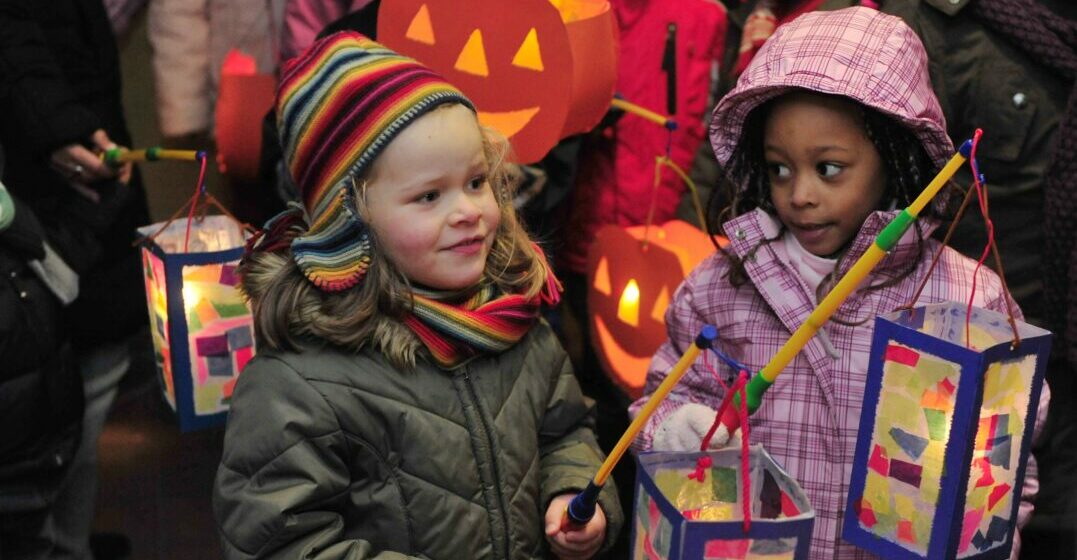Updated on January 9, 2024

How to celebrate St. Martin’s Day in Germany

What is St. Martin’s Day in Germany and why is it so special? It’s not so much the religious aspect of the Catholic holiday that makes it important. More than anything else, St. Martin’s Day, also known as the lantern festival, is a perfect opportunity to create precious memories with your kids. Neither of you will ever forget being out in the cold and dark, colorful lanterns lighting up the night, following a rider on horseback to a huge bonfire to share hot cocoa and a special treat. Still not sure what this holiday is all about? Then have a look at our Saint Martin’s Day Q&A.
Saint Martin’s Day is not a public holiday, but a religious holiday. On the evening of November 11th, children and parents come together in front of the children’s preschool or primary school or the local church. They light lanterns they prepared and follow a rider with a red cloak on a white horse through the dark streets swinging their lanterns and singing songs about the light they bring and the life of the Saint during Martinsparade.
The rider representing Saint Martin leads them to a public space with a bonfire. Sometimes he will make the horse jump over the fire, sometimes a scene from the Saint’s life will be enacted: Martin divides his mantle into two to share it with a beggar during a storm. The evening finishes with hot cocoa and a pastry shaped in the form of a man (Stutenkerl or Weckmann), a croissant (Martinshörnchen) or a sweet pretzel (Martinsbrezel).
St. Martin of Tours was a Roman soldier who lived in the late fourth century B.C. He converted to Christianity and became a monk. Famous for living a simple Christian life and working miracles, he was called to Tours in Gaul (France) to help the sick but taken to the church to be consecrated as a bishop. The humble Saint hid in a barn full of geese, whose quacking gave him away!
On Saint Martin’s Day, Saint Martin is remembered in the catholic parts of Germany for sharing his mantle with a beggar during a storm. The religious holiday falls on the same day as the beginning of Advent fasting as well as of Carnival. With the harvest and preparations for winter finished, it is the perfect opportunity for a feast. And feast they do on Saint Martin’s day in Germany. The traditional Martinsgans is served with dumplings and red cabbage. Retribution for the loud noise that gave away the Saint hiding in the goose barn?
The Martinsparade is a crucial part of the celebrations on Saint Martin’s Day in all of Germany. Some regions have additional customs like the Martinssingen or Martinisingen where kids go from door to door singing for candy. Protestant areas in Germany have adopted the tradition of the lantern festival without its religious background. Today the celebrations are sometimes advertised as a lantern festival (Laternenfest) even in Catholic parts of Germany in order to include children and parents from all cultural and religious backgrounds. Due to the great popularity, parades are held on different days around November 11th, so you get more than one chance to participate.
Saint Martin’s Day is one of the holidays in Germany that are extra special for families with small children. Preparing the paper lanterns, singing the songs and participating in the Martinsparade with the Martinsfeuer on the evening of November 11th will create unforgettable memories. If you celebrate the life of Saint Martin of Tours or enjoy the lantern festival on a dark winter evening, the traditional Martinsgans will be a welcome feast to finish the cold but exciting day. For a happy ending, consider substituting the traditional candle in the paper lanterns with an electrical light!